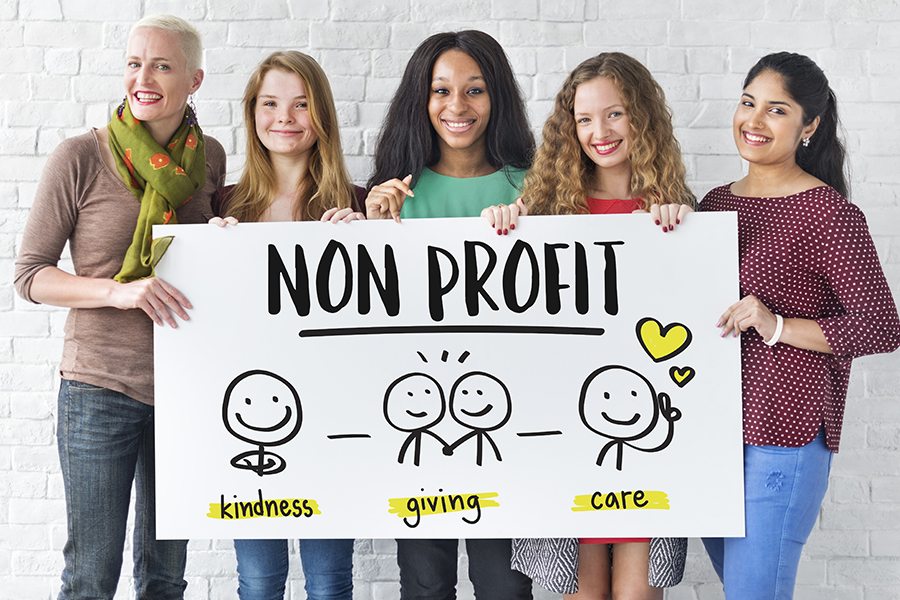The Significance of Partnership and Partnership for a Nonprofit Agency in Maximizing Resources and Enhancing Neighborhood Engagement
In the realm of nonprofit firms, collaboration and partnership emerge as essential mechanisms for promoting and magnifying sources community engagement. By purposefully involving with various other companies, nonprofits can utilize shared experience and financial backing, consequently resolving complicated social obstacles much more expertly. In addition, these alliances not just boost program efficacy yet also grow a deeper feeling of community participation and ownership. Yet, real potential of these collective efforts frequently stays untapped, questioning regarding just how finest to navigate collaborations for ideal impact and continual success. What aspects add to the effectiveness of these cooperations?
Advantages of Cooperation

Furthermore, cooperation fosters advancement by motivating the exchange of concepts and best techniques. When companies function with each other, they can explore diverse perspectives, causing imaginative solutions that may not emerge in seclusion. This common problem-solving method can eventually enhance service shipment and program results.
In addition, collaborative initiatives can boost neighborhood engagement. When nonprofits partner with one an additional, they can activate wider assistance from stakeholders, consisting of volunteers, benefactors, and area participants. This collective engagement not only raises visibility however likewise enhances the integrity of the taking part organizations.
Building Strategic Partnerships
Cooperation amongst nonprofit agencies usually results in the development of tactical collaborations, which are essential for making the most of impact and accomplishing common goals. These partnerships make it possible for companies to utilize each various other's strengths, boosting service shipment and increasing outreach. By straightening missions and objectives, nonprofits can create a collaborating impact that intensifies their reach and effectiveness within the neighborhood.
Building calculated collaborations calls for cautious preparation and mutual understanding. Establishing open lines of interaction promotes depend on, allowing partners to review sources, duties, and assumptions transparently.
Furthermore, clearly defined roles and obligations are necessary for accountability and success. Defining the partnership via written contracts can give a structure for cooperation, detailing the scope of job, efficiency metrics, and examination methods. By cultivating these strategic partnerships, not-for-profit firms can enhance their ability to deal with neighborhood demands, introduce remedies, and activate sources successfully, inevitably leading to an extra lasting and substantial effect in the areas they serve.
Sharing Resources Successfully
How can not-for-profit firms maximize their effect through effective source sharing? By strategically collaborating with various other organizations, nonprofits can enhance their operational performance and extend their reach within the neighborhood. Resource sharing involves merging various properties, consisting of funds, personnel, expertise, and centers, to deal with usual objectives better.

Additionally, leveraging each other's strengths can promote innovation. By exchanging knowledge and best techniques, firms can enhance service shipment and develop new remedies to community difficulties. Reliable source sharing likewise grows a feeling of unity, enhancing the idea that collaboration is crucial for achieving significant social effect.
Engaging the Community
What approaches can not-for-profit agencies employ to effectively engage their areas? Firstly, developing open lines of communication is important. Utilizing various systems, such as social media, e-newsletters, and neighborhood discussion forums, permits companies to share information, get feedback, and foster dialogue. This two-way communication not only educates the area about the agency's objective and activities yet additionally invites input, making community participants feel valued and included.
Additionally, forming collaborations with regional companies can improve outreach efforts. nonprofit agency. Teaming up with institutions, organizations, and various other nonprofits can enhance resources and create an extra substantial support network, enabling joint initiatives that reverberate with neighborhood demands
In addition, hosting community occasions, workshops, and volunteer chances can facilitate much deeper interaction. These tasks develop a sense of belonging and motivate active engagement, allowing individuals to contribute to the agency's goals while developing partnerships with fellow neighborhood participants.
Gauging Joint Success
Evaluating the performance of collaborative efforts is important for not-for-profit companies seeking to optimize their impact. Measuring collaborative success involves establishing clear, measurable objectives and making use of a selection of metrics to examine efficiency. Secret indications may include the variety of collaborations developed, resources shared, and the substantial results accomplished via partnership.
To successfully determine success, nonprofits must execute a why not check here framework that includes both measurable and qualitative data. Meetings and studies can give understandings into stakeholder satisfaction and the viewed value of partnerships. Furthermore, tracking metrics such as solution reach, community interaction degrees, and financial performance can supply a comprehensive sight of collective effectiveness.
Normal analyses must be carried out to recognize areas of enhancement and best practices. This repetitive process not just boosts liability but also fosters a society of continual knowing within the company - nonprofit agency. By transparently sharing evaluation results with stakeholders and partners, nonprofits can develop and enhance partnerships trust fund
Ultimately, determining collaborative success allows not-for-profit agencies to refine their approaches, allocate resources extra effectively, and strengthen their mission-driven initiatives, bring about a higher cumulative effect on the neighborhoods they offer.
Conclusion

In the realm of nonprofit agencies, cooperation and collaboration arise as crucial systems for cultivating and enhancing sources community interaction - nonprofit agency. By fostering these tactical alliances, try this out nonprofit companies can enhance their ability to resolve area needs, introduce services, and set in motion sources properly, ultimately leading to an extra sustainable and substantial effect in the areas they serve
By tactically collaborating with see it here various other organizations, nonprofits can improve their functional performance and expand their reach within the community.What strategies can nonprofit agencies employ to properly engage their neighborhoods?Partnership and partnership stand as necessary columns for nonprofit agencies intending to make the most of resources and boost community engagement.